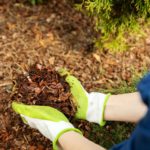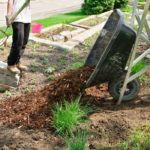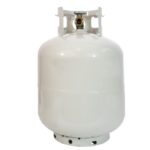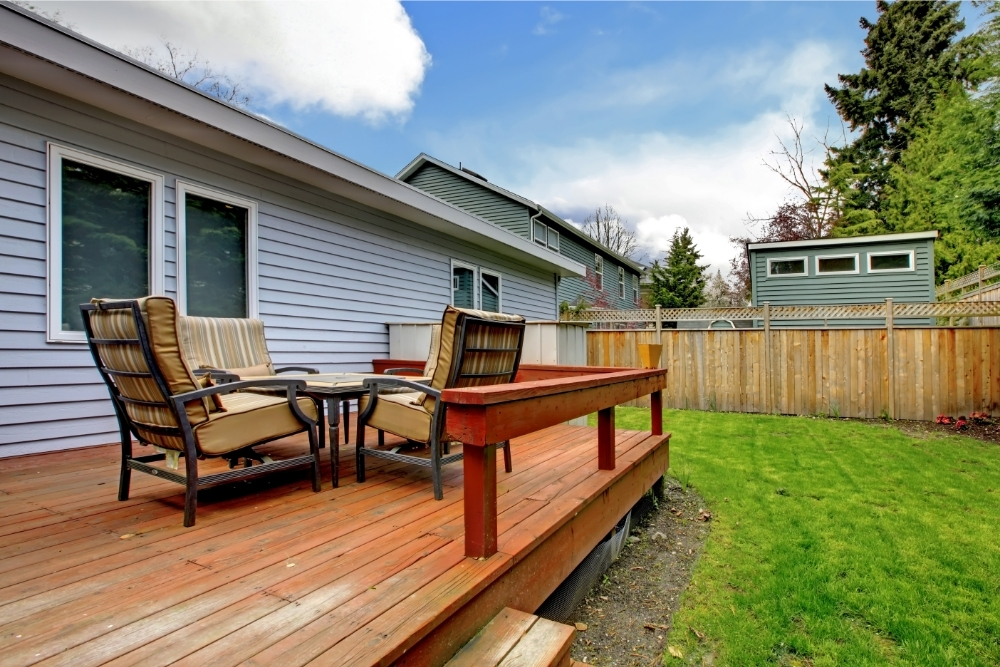Mulching is often essential for the survival of your garden or landscape because it helps preserve water in the soil, regulate soil temperature, and prevent weed growth. Organic mulch also breaks down to improve the quality of the soil by adding nutrients. However, using too much mulch might end up hurting your plants.
Too much mulch can harm plants through oxygen and moisture deprivation. Other problems of over-mulching include excessive heat, root/bark decomposition, changing soil acidity, plant disease, and the formation of a welcoming habitat for pests. Proper installation of mulch helps avoid these risks.
Mulch promotes the growth of healthier plants by replenishing the soil with nutrients. While organic mulch offers many potential benefits, over-mulching is something that you should certainly try to avoid. Let’s look at how too much mulch negatively affects plants and how to get the right mulch thickness.
Is It Possible to Use Too Much Mulch?
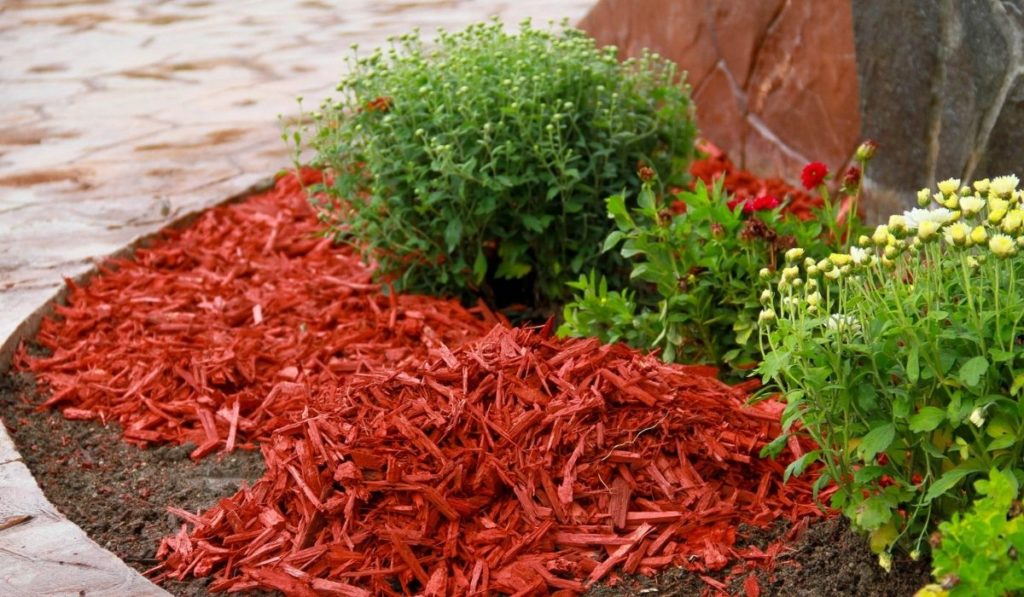
Yes, it’s possible to use too much mulch, and this can have negative effects on your garden and plants. Mulch can be your garden’s best friend — but also its worst enemy. For the best results, mulch thickness should be about 2 to 3 inches.
The layer mimics what you would find in a natural environment and serves multiple functions to promote healthy plant growth.
There are various ways through which you might end up using too much mulch. First, using a thickness of over 3 inches on your garden poses a big risk to your plants.
Piling much of the organic material near a plant is another way of over-mulching. Many gardeners pile mulch around the plant’s stem to protect it but end up damaging the bark. With too much mulch, the bark doesn’t get sufficient air and moisture from the soil and can rot over time.
When properly installed, organic mulching materials form a protective layer over your plants’ roots. As the biodegradable materials decay, they release important nutrients into the soil layer below. The protective layer also regulates temperatures and adds an aesthetic touch to your garden.
How Over-Mulching Can Damage Plants
Too much of a good thing can become dangerous, and this happens when you use too much mulch. Over-mulching negates all the good things mulch can do to your garden. Here are some potential effects:
Moisture Deprivation
An overly thick mulch layer doesn’t allow for the free flow of moisture through to the soil layer beneath. The thick layer of organic materials becomes hydrophobic, which means little or no water seeps into the soil layer below. Even after watering your plants sufficiently, the thick mulch layer prevents the moisture from reaching the roots.
Oxygen Starvation
Over mulching also suffocates the roots below by preventing air circulation. Air is crucial for plant growth, and while mulch serves an important role, thick mulch layer interferes with the natural air flow. Plant roots require oxygen, and diminished levels of air flow can lead to stunted growth or death of the plants.
Root Decomposition
Reduced air flow in the soil could cause root rot. Rotting roots are every gardener’s nightmare because you might have to replant large sections of your landscape as a result.
Excessive Temperatures
Too much mulch also raises temperature levels in the soil, which affects your plants’ health. A thin mulch layer helps with temperature regulation and insulates the tree roots during the colder months. If you use too much mulch on your garden, the layer could trap too much heat in the soil. The excessive heat is a risk to your plants.
Increased Risk of Plant Disease
Plant disease is another risk associated with the use of too much mulch. If you lay a very thick layer of wet mulch on your garden, the risk of bacterial or fungal disease is high. Disease-causing pathogens thrive in the wet conditions, and they might affect the entire mulch bed.
Other Issues Caused by Too Much Mulch
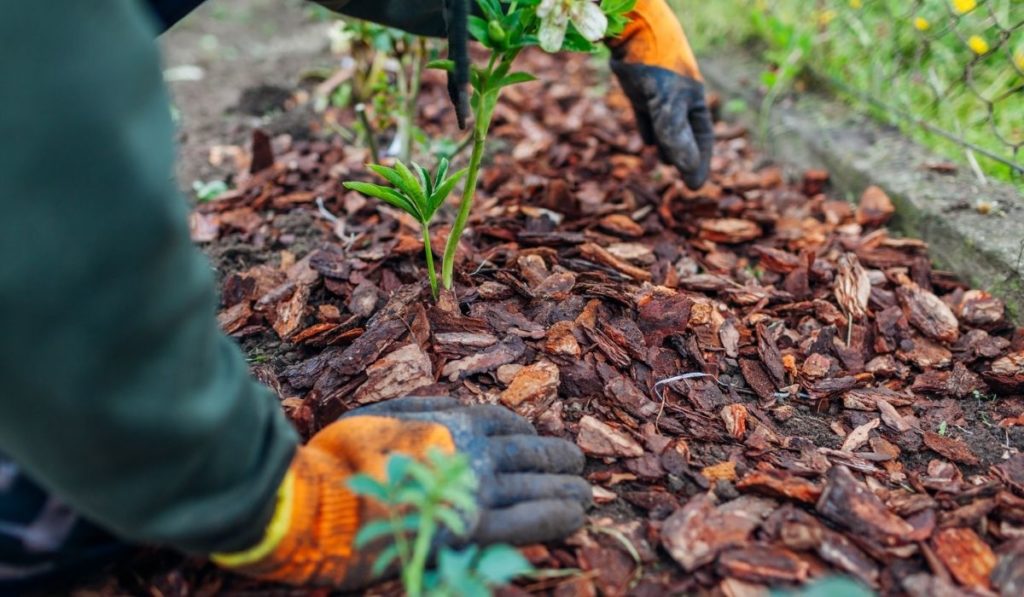
Using too much mulch causes myriad other problems in your garden. If you’ve been mulching for some time without getting the desired effects, it’s likely that you’re over-mulching. Here are other negative results of using too much mulch:
Nitrogen Deficiency
Using too much fresh/non-aged mulch around your plants could lead to nitrogen deficiency. To break down the mulch, decomposing bacteria require large amounts of nitrogen, which isn’t available in the plant trunk. Bacteria turn to the nitrogen in the soil to break down the mulch. The main symptom of nitrogen deficiency is yellowing of leaves.
Changes in Soil pH
Using an excessive amount of the same type of mulch over a long time changes the soil pH. If the mulch is very acidic for instance, the soil becomes more acidic. The plant roots are unable to absorb nutrients in the soil. Micronutrient deficiencies caused by changes in soil acidity can kill your plants or affect their quality.
Habitat for Rodents
Very large piles of mulch around plants create good habitat for rodents and other pests. Rodents love the warmth created by thick levels of organic matter. To survive, the rodents feed on plant barks, which can ruin the aesthetics of your garden or force you to graft the tree.
How to Properly Place Mulch
If you want to improve your garden, start by learning how to place mulch properly. The mulch layer has multiple benefits and contributes to healthier plants and improved curb appeal.
For the best mulching results, here are some tips:
- Bed preparation: Before you place mulch, get rid of any weeds by pulling them, spraying herbicide, or cutting them close to the ground. If you use herbicide, allow some time for the weeds to die before mulching.
- Manage the surrounding greenery: If you’ve got other plants or trees on your landscape, trim them to avoid seeds, branches or other debris on your garden.
- Rake the mulch bed: Before mulching, prepare the soil bed and remove any unwanted organic and inorganic matter.
- Cultivate the mulch bed: After clearing the debris on your garden, cultivate the soil to allow easier flow of air and moisture.
- Install a weed barrier: Choose a suitable physical weed barrier such as newspapers or cardboards. These are biodegradable barriers that won’t affect the ecosystem.
- Install mulch: Place mulch evenly on your garden with up to 3 inches thickness. Avoid mulch volcanoes around plants to avoid damaging the protective bark. Spray the mulch with water to help it settle down.
Mulch requires maintenance as the season progresses. Loosen the mulch if it becomes too compacted, remove any weeds, and refresh the mulch bed if the initial layer thins out.
Alternatives to Mulch
Most people use bark mulch (on Amazon) or shredded wood/shavings as mulch for their gardens. These organic materials decay quickly and add nutrients to the underlying soil layer. If you don’t have access to mulch, there are alternatives you can use in your garden. Some effective alternatives to mulch include:
- Rock, gravel, pebbles and other stones
- Shredded leaves mulch
- Cocoa bean hulls mulch (on Amazon)
- Grain straw, hay, forage or cover crops
- Pine needle mulch/pine straw
- Cardboard and newspaper
- Recycled rubber mulch (on Amazon)
- Cotton gin waste
- Rice hulls
- Tree leaves
- Chipped brush
When choosing an alternative to mulch, consider the drawbacks. Some mulching materials, such as limestone and pine straw, affect the soil’s pH after long use. Others, like rubber, might release toxic compounds that affect the ecosystem. When using rock/gravel mulch, take care to avoid excessive soil compaction.

